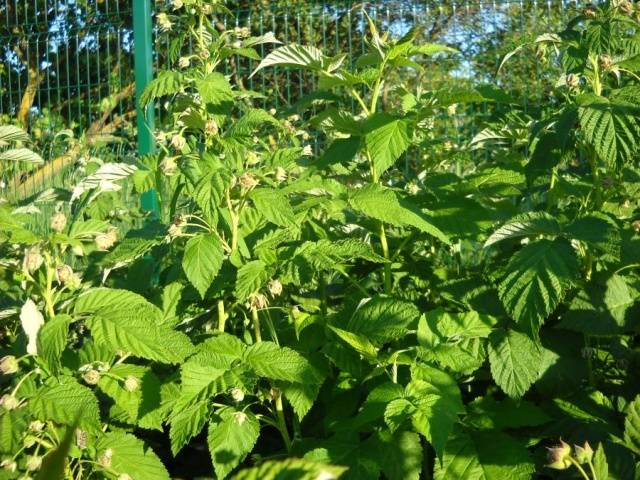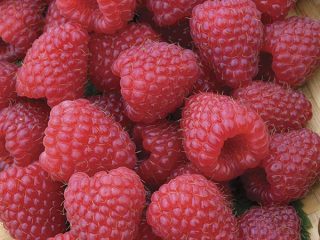Content
The name of this raspberry variety alone makes you think about its characteristics. Unattainable in terms of yield or the size of the berries, or their beauty, or perhaps the whole set of characteristics? Reviews and photos of those who grew Inaccessible raspberries are often very contradictory and do not even coincide with the description of the variety given by the author himself. Perhaps this is due to the fact that the Inaccessible raspberry, like many remontant large-fruited varieties, has a large supply of unrealized potential and under different growing conditions it is capable of showing completely different results.
Description of the variety
Raspberry Inaccessible was bred in the late 80s of the last century by the famous scientific breeder V.V. Kichina at the All-Russian Selection and Technological Institute of Horticulture and Nursery Growing. Initially, raspberries were bred under the number P-34; sometimes this variety can also be found under the name Elite, although this name is generalized for many elite raspberry varieties from the collection of V.V. Kichins. Only after 1990 did raspberries receive their legal name, according to one version, in honor of their particularly long fruiting period, which can last until the very first frost, inclusive.
Raspberry berries can be collected at short intervals, lasting 5-7 days; in total, this results in about 5-6 waves of fruiting in one season.
The bushes of the Inaccessible raspberry grow small, often reaching only 1.0-1.2 meters in height. The maximum possible plant height obtained with a high level of agricultural technology is 1.5-1.6 meters.
Therefore, do not be alarmed if the seedlings of this raspberry variety seem small to you and do not surprise you with their power. Adult shoots are also quite short, but they are strewn with berries along almost their entire length.
Annual shoots are also characterized by shortened internodes, practically without a waxy coating, small spines are evenly distributed along the entire length of the shoots. When in a state of vegetative dormancy, they are distinguished by a yellow-brown color.
A raspberry bush is capable of forming about 6-7 replacement shoots and up to 10 root shoots, so you will not have problems with its reproduction.
The foliage of the bush is average, growing up to 70 cm wide. Berries begin to appear and ripen, starting from the tops of the shoots. The last place the berries ripen is in the lower part of the bushes. The fruiting tip is about one meter long and forms 2-4 orders of branching. Fruit branches are located along the entire length of the shoot and form small clusters.
In terms of productivity, the Inaccessible raspberry also claims to be one of the leaders; from one bush you can harvest from 3 kg (on average) to 6 kg of berries (with intensive care) during the season.
As for resistance to diseases and adverse factors, the opinions of gardeners are ambiguous. Pests and diseases can bypass the Inaccessible raspberry if it is grown in an annual crop, cutting off all shoots for the winter and leaving no chance for parasites to hide and overwinter in a safe shelter. But raspberries do not tolerate extreme heat or heavy rains well. In the first case, the bushes may temporarily stop developing, the berries may bake and dry out. In the second case, you lose the taste.
But the Inaccessible raspberry has high winter hardiness; there are reviews of its successful cultivation in regions with short, cold summers and harsh, long winters.
Characteristics of berries
Unattainable raspberries are worthy of their self-explanatory name.
- They have an elongated conical shape with a slightly flattened tip.
- The berries are dark red in color and have a characteristic shine.
- Raspberries are collected in brushes.
- Raspberry Inaccessible refers to large-fruited varieties – the average weight of one berry is 4-6 grams, with proper care it reaches 10 grams. The berries are distinguished by their uniformity and very attractive appearance.
- One berry can grow up to 4 cm in length.
- The pulp is juicy, the drupe is small, almost imperceptible to the taste.
- One cannot help but like the aroma and taste of the Inaccessible raspberry - a sweet, dessert taste with a harmonious subtle sourness - the berries really melt in the mouth.
- But we cannot fail to mention a frequently encountered drawback - the berry does not hold its shape very well and can fall apart. This deficiency can be corrected with proper care and suitable development conditions.
- Due to this drawback, many believe that raspberries of this variety do not tolerate storage and transportation well.
- Well, at home - for fresh food and any preparations for the winter - Inaccessible raspberries are simply magnificent.
Advantages and disadvantages
Raspberry Inaccessible has both pros and cons in its care, and what will be decisive for you depends only on you and your conditions.
Among the undoubted advantages are:
- Early harvesting of berries, and combined with extended fruiting, makes it possible to harvest raspberries for almost two months.
- The compactness of the bushes makes it possible to use compacted planting and increase the yield per square meter.
- Commercial appearance of berries and their high taste.
Inaccessible raspberries also have disadvantages:
- Not very good heat tolerance, the need for shading in the southern regions.
- Seedlings can be susceptible to chlorosis if there is a lack of nutrition or poor lighting.
- Not too high adhesion of the berries and, as a result, low transportability.
- A large number of shoots can be seen as a disadvantage in some conditions, and as an advantage in others.
Features of cultivation and care
Raspberry Inaccessible is able to show its best side only with conscientious and attentive care. She is very partial to fertilizing - even when planting raspberries, it is better to fill the planting holes or trenches with 1.5-2 times more organic matter or mineral fertilizers.We should not forget about fertilizing during the entire growing season. But you shouldn’t be overzealous with nitrogen-containing fertilizers - it’s better to use wood ash, superphosphate, as well as complex fertilizers with a predominant content of potassium and phosphorus and a mandatory set of microelements.
You can use a compacted fit. On average, 0.7 to 1.4 meters are left between bushes when planting, depending on the row spacing, which can be from 1.5 to 2 meters.
When pruning in spring, you should leave about 6-7 shoots per bush - this is the optimal amount for obtaining abundant harvests.
At first it seems that due to their compactness and relative short stature, the bushes do not require staking. But it’s better to arrange a single-row trellis in order to improve the illumination of the bushes, organize their maintenance and make harvesting easier.
Regular and abundant watering is necessary throughout the season, especially in areas with hot and dry climates.
Like all remontant raspberries, it is recommended to cut off all shoots at ground level before winter. This will make it possible to get one, but luxurious harvest at a time when traditional raspberries are no longer in sight. If you want to grow Inaccessible raspberries with two harvests per season (summer and autumn), then the overall result will still be less due to the shift in the timing of autumn fruiting into winter.
When planting seedlings in the spring, if they have not yet produced a real harvest, it is recommended to tie them together, bend them down and cover them for the winter.
If frosts are already common in your area in September-October, it is better to cover the raspberry bushes with medium-density spunbond or any other breathable covering material to protect the last berries.
Reviews from gardeners
Reviews from people who grew Unattainable raspberries are very mixed - many managed to find an approach to them and enjoy their beauty and early and long-lasting yield. Others decided for themselves that for their conditions there are many other, no less attractive raspberry varieties.
Conclusion
Raspberry Unattainable is very interesting, first of all, for its fruiting time and the possibility of endless experimentation with the yield and taste of the berries. She will definitely appreciate your attention to her and will thank you with juicy, tasty and beautiful berries.
















